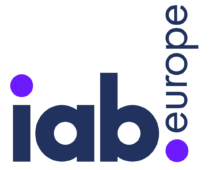Dynamic Creative Optimisation: Talkin’ About an Evolution
by Lindsay Rowntree on 25th Oct 2016 in News

In our latest column from the IAB’s Display Trading Council, Jez Fawcett, international head of product, Rocket Fuel and Mathew Downs, programmatic services EMEA, Yahoo, share with ExchangeWire the power of Dynamic Creative Optimisation and why, while no longer a new technique, its use cases are evolving and it can still be a strong driver of increased ad effectiveness.
Advertisers have traditionally created messaging on a one-size-fits-all basis, despite knowing that people respond to creative in different ways at different times, and in different contexts. But people aren’t one-size-fits-all, and so your creative shouldn’t be either.
With programmatic technology, brands have the ability to develop and deliver tailored messaging and creative according to the viewer’s situation. Artwork can vary, depending on the time of day, the weather, customer profile, search history, or browsing behaviour.
When Dynamic Creative Optimisation (DCO) arrived on the scene, it became possible to use templates and automated creative and messaging selection. This enabled marketers to take advantage of the huge scale of opportunities that programmatic affords, without having to invest up front in artwork for – effectively – long-tail advertising. DCO isn’t new, but there’s a good chance you’re not getting the most out of it.
At first the only limitations became advertisers’ imaginations and how many variables it would make sense for them to go through. (Or how long they could keep going for!) However, keeping the balance between targeting and volume reach for campaign effectiveness is a challenge. If you are targeting segments, then there will always be economies of scale, but, with artificial intelligence, it is possible to go beyond that and truly focus on one-to-one marketing.
Every marketers’ goal is to create targeted advertisements that are tailored in real time based on prospective consumers’ internet browsing habits for the ultimate conversion rate. If you’re advertising a product to a person, but it’s not tailored specifically for that individual, then it ultimately effects your bottom line. People want brands to know who they are and deliver a personalised service, customised specifically to them, across all channels. DCO allows brands to achieve this, and it can be used in numerous guises to support branding and performance.
Historically, DCO fits with large, direct-response campaigns for retailers that provide thousands of product lines. However, now that large publishers are making their unique user datasets available, we see DCO being used more widely in upper funnel or prospecting campaigns. Without data to inform the creative, the whole exercise is meaningless. The more data brands can use, the more relevant they can make their campaigns. And the more relevant the campaign creative is, the stronger the engagement.
Capturing individual consumer signals across multiple channels and devices puts you in a much better position to deliver applicable and engaging creative. Instead of showing a single, generic version of the creative, you can segment audiences into more tailored groups and show them creative that is more likely to make an impact upon them. Assumptions no longer need to be made. Advertisers can now understand the intent of each person, using signals from search, mail, and browsing history – integrating specific information that responds to individual user data, such as using location information to show the nearest car showroom, for example. While, as a next step, monitoring and assessing behaviour additionally helps to identify the best moment for the ads to be placed in front of different users.
Advertisers can now deliver the right creative, in the right format, at the right time, with artificial, intelligence-led campaigns that automatically select both creative options and media buys. This opens the door to greater granularity without sacrificing volume reach and not only maintains ad effectiveness, but increases it.
Another benefit of programmatic and DCO is the ability to use campaign data to inform future ones, resulting in more powerful and agile advertising capabilities.
DCO effectively enables multiple campaigns to run concurrently, meaning the scope for gathering insights from each strand’s performance is huge. Marketers are able to clearly and precisely judge what works and for whom, enabling strategic advantages for the campaign, and generating quick and valuable feedback to use for other activity. The powerful combination of reach, scale, and personalisation should make DCO irresistible anyway, but the speed and detail of insights seals the deal.
In the future, we can expect even more. DCO will likely have augmented or virtual reality capabilities, taking the user to a place of a visualisation of the product or service that is fully customised to them. Its dramatic impact will only continue to get more intelligent in turning eyeballs, and encouraging users back to the idea that advertisers can virtually listen – understanding what and how people interact with their creative in an augmented space and adapting to that.








Follow ExchangeWire